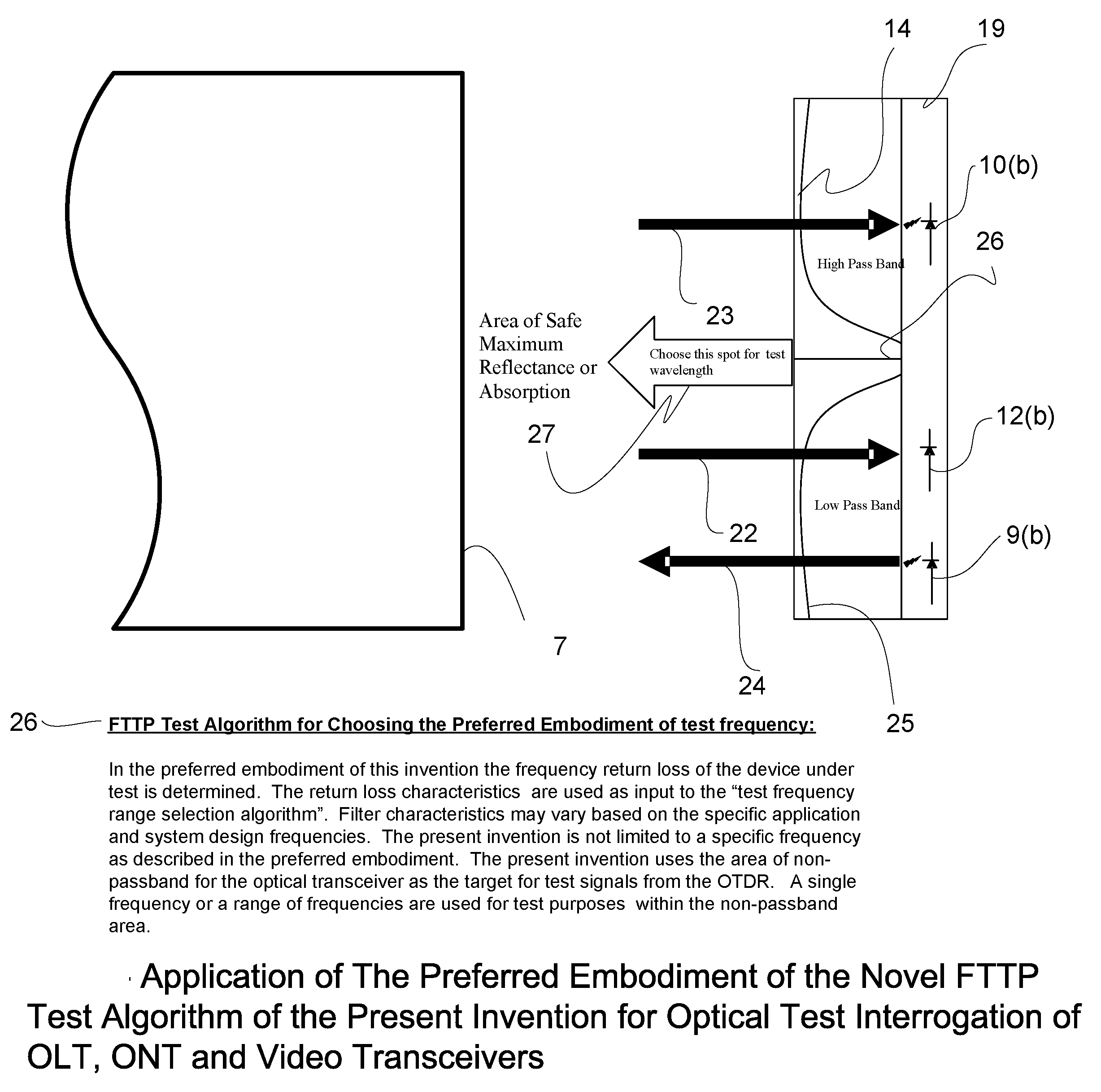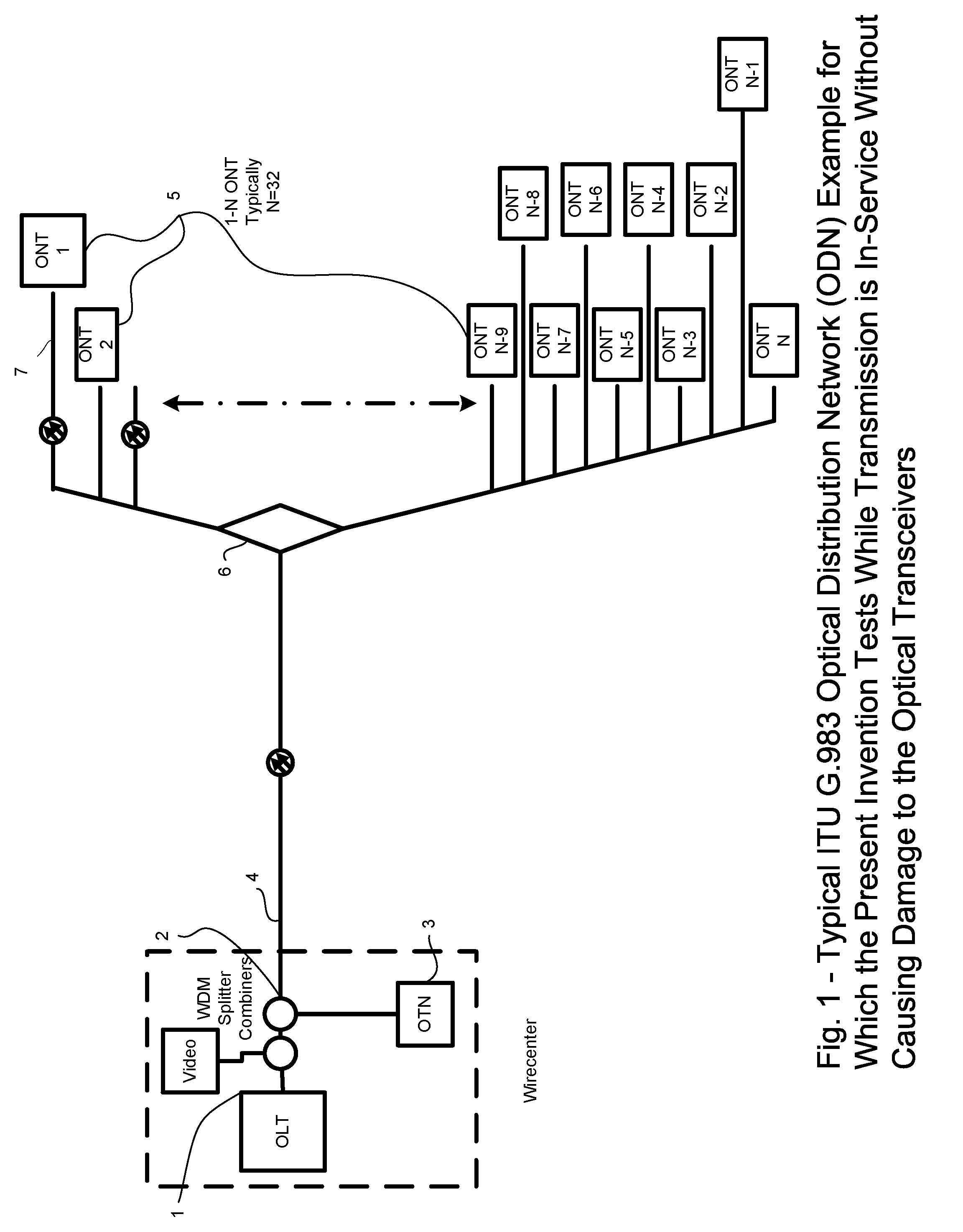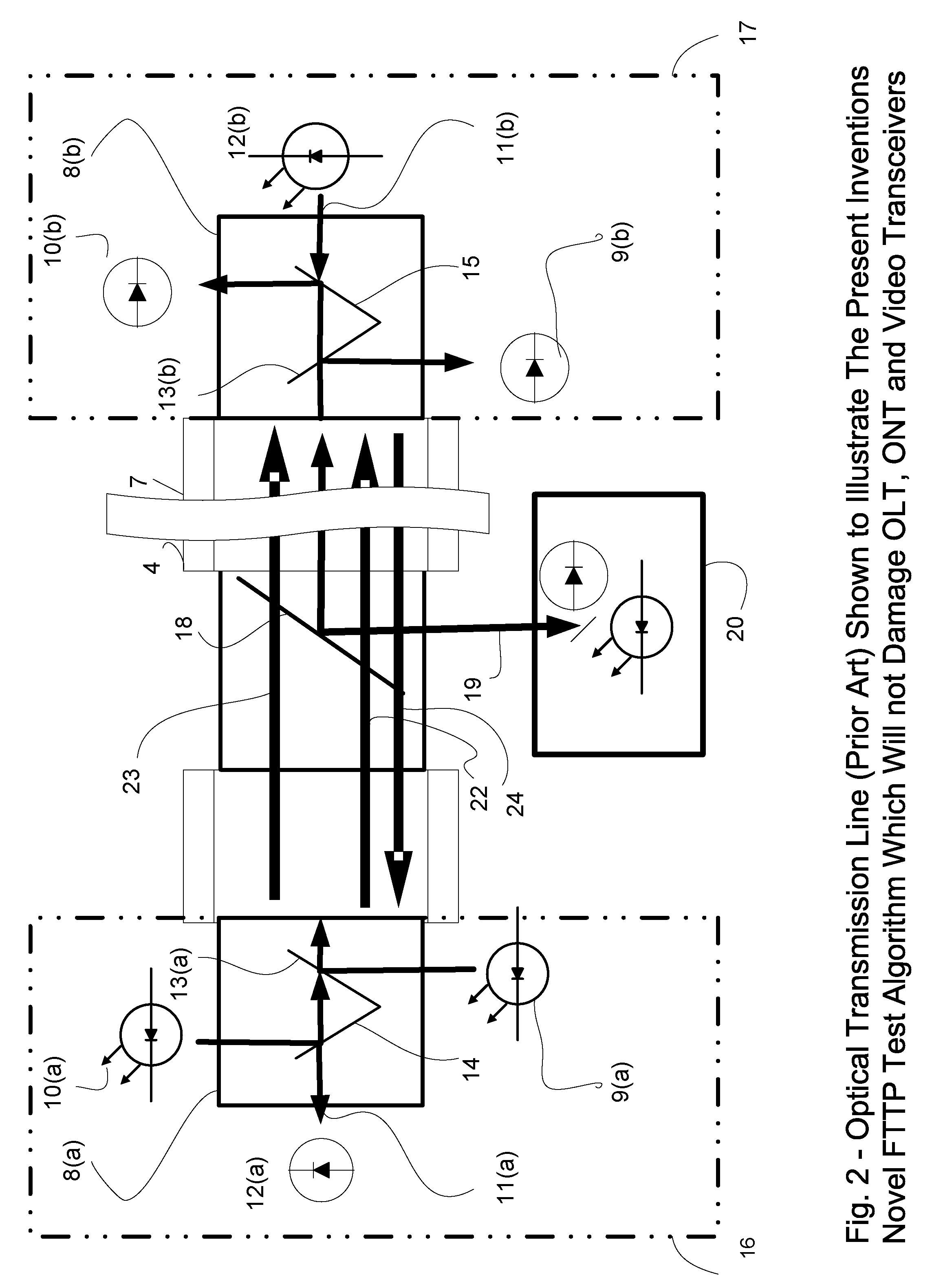Novel Algorithm, Method and apparatus for In-Service Testing of Passive Optical Networks (PON) and Fiber to the Premise (FTTP) Networks
a technology of in-service testing and optical networks, applied in the direction of instruments, electromagnetic transmission, transmission, etc., can solve the problems of inability to observe and resolve multiple reflections, inability to locate impairments on the optical line under test, and current techniques are ineffectiv
- Summary
- Abstract
- Description
- Claims
- Application Information
AI Technical Summary
Benefits of technology
Problems solved by technology
Method used
Image
Examples
case 1 exists
[0036] If Case 1 exists and plurality of reflections are apparent at the OTN receiver (20) advanced techniques of the present invention will be used to isolate the fault. A combination of resonance stimulation of the optical fiber and a short duty cycle will give us the ability to get enough energy in the fiber to spot problems by windowing in on expected reflections and lack of reflections to identify if the plant is responding as expected. An example of OTN OTDR information returned in the presence of working traffic and without damage to the ONT and OLT devices is presented in FIG. 4. (28,29,30)
[0037] If the plant has a reflective, such as, but not limited to, a fiber break condition that impairs light transmission a fault will be flagged located and identified using techniques familiar to those skilled in the OTDR technology.
[0038] As a result of the enhanced reflectivity of a fiber break, the OTDR will calculate the distance to fault and the OTN will report the position to the...
case 1
[0043] Case 1) The pulse is reflected by the band-pass filter rejection from the triplexer transceiver is such that the return loss (27) is very low:
[0044] a. The apparatus invention uses the topology map of the optical circuit to calculate the time of flight (TOF) for the round trip pulse for each leg based on an expected reflection TOF calculated from the record of the feeder and legs. Where Cmedia represents the speed of light in the media of transmission. In this case the media would be Silica.
TOF=(Distance of feeder+Distance of leg) / Cmedia
[0045] b. Attenuation is estimated based on loss for the feeder and each leg.
[0046] c. The transmission line is stimulated with a test signal which is modulated to optimize the energy density of the reflected pulse returning to the splitter / coupler port for the specific leg in test.
[0047] d. Sweeping modulation causes pulse density to vary. At specific pulse train or sign wave frequencies each leg in turn will experience first order (2nd or...
case 2
[0052] Case 2) The optical pulse is completely absorbed by the transceiver module such that the return loss in the optical range used for testing is high enough so that end reflections are not detectable from the test apparatus.
[0053] a. Choice of the center optical frequency at the point of maximum filter rejection for the triplexer of diplexer transceiver attached to the end of each leg means that the sensitive receivers will not be affected by the optical interrogation of the attached OTDR test apparatus.
[0054] b. In this case at the frequencies specified noreflections will be seen on the OTDR read out. This condition indicates a healthy network and the test can be done using the present invention, the novel FTTP Test Algorithm to choose the interrogation optical frequency and a modified OTDR, testing is accomplished without harm or interruption of service to the ONT and customer respectively.
[0055] c. Using the present invention as in Case 2 item b, if a reflection is detected...
PUM
| Property | Measurement | Unit |
|---|---|---|
| wavelength | aaaaa | aaaaa |
| wavelength | aaaaa | aaaaa |
| wavelengths | aaaaa | aaaaa |
Abstract
Description
Claims
Application Information
 Login to View More
Login to View More - R&D
- Intellectual Property
- Life Sciences
- Materials
- Tech Scout
- Unparalleled Data Quality
- Higher Quality Content
- 60% Fewer Hallucinations
Browse by: Latest US Patents, China's latest patents, Technical Efficacy Thesaurus, Application Domain, Technology Topic, Popular Technical Reports.
© 2025 PatSnap. All rights reserved.Legal|Privacy policy|Modern Slavery Act Transparency Statement|Sitemap|About US| Contact US: help@patsnap.com



